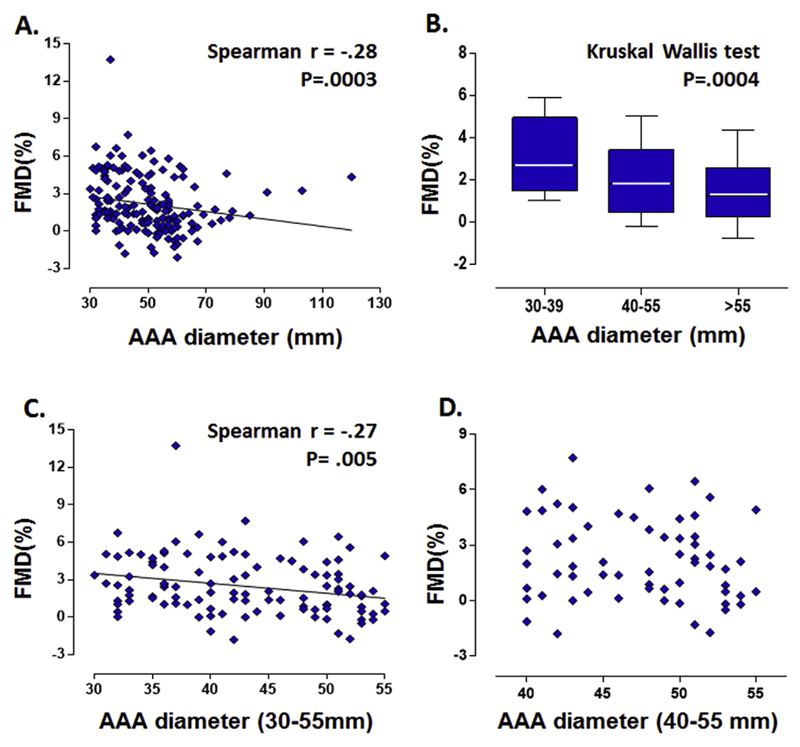Figure 1.
Correlation between flow mediated dilatation (FMD) and size of abdominal aortic aneurysm (AAA). There is a significant inverse correlation between the size of AAAs and FMD of forearm brachial artery at the initial assessment. (A) The percentage change in brachial artery diameter after stimuli is presented as FMD(%) (Spearman’s r = −.28, p < .001). (B) There is also a significant reduction of FMD across the different size groups of AAAs (Kruskale–Wallis test p < .001). (C) This significant negative correlation between AAA size and FMD is still present when the large AAAs (> 55 mm) were excluded from the analyses (Spearman’s r = −.27, p = .005). (D) However, such correlation is not observed within the group of moderate sized AAAs (40–55 mm) (Spearman’s r = −.1, p = .4).

